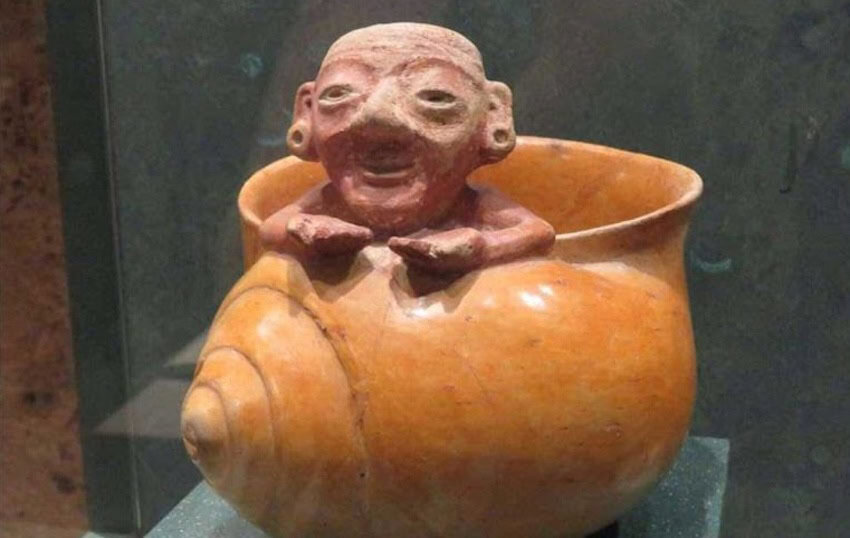As I wandered into the kitchen for my morning coffee some weeks ago, I had a feeling that something wasn’t quite right. Then I saw it: a mountain of sales receipts, business cards, grocery lists and other miscellaneous scraps of paper piled up on one of my two sofas.
The question came to my mind immediately. Did I have a duende? I had heard about them over the years from Mexicans. Duendes lived in their house, played pranks on them or followed them home. They were unseen, but they were there. In Latin America, duendes are gnome-like mythological creatures seen as the true owners of a house. Mexican duendes are said to stand two to three feet tall, with pointed elf-like ears, piercing red eyes that glow in the night and no thumbs.

What are duendes like? Depends on where you live
The legend of the duende has roots in both Iberian and Indigenous American cultures. In Europe, the idea of a duende is related to Roman household gods like the Lares and Di Penates, and the word in Spanish is said to be a contraction of “dueño de la casa”: the owner of the house, which is what the spirit really is. Similar European household spirits include the Scottish brownie, German kobold and Slavic domovoy.
With the rise of Christianity, duendes and their cousins came to be seen as sinister spirits. They are associated with the darker, supernatural side of life, sometimes representing death and the unknown. Duendes can be mischievous and elusive; whether they are benevolent or malevolent seems to depend on where you live and the beliefs of your community.
Across the ocean, the ancient peoples of the Americas developed their own beliefs about small supernatural beings. The Nahuas of central Mexico knew of nature spirits called “ohuican chaneque,” or “dwellers in dangerous places.” While good chaneques lived near human populations and were harmless pranksters, bad chaneques lived in forests and caves and could steal children or cause travelers to lose their way.
For some Maya peoples of the Yucatán Peninsula, creatures called aluxes are another small, humanoid nature spirit that can be both helpful and a nuisance in turn. A farmer can call upon an alux to take care of his milpa (cornfield) by building a miniature house for it on his land and offering it part of his harvest, as well as other sacred foods. An alux not properly compensated for its help can turn spiteful and damage a harvest. In February 2023, then-President Andrés Manuel López Obrador made headlines when he suggested that an alux had been spotted during construction of the Maya Train.

In some parts of Mexico, duendes live in a house’s walls. Young unkempt children are warned that duendes like to collect long toenails and might accidentally cut off an entire toe when they come out at night. In Belize, duendes play tricks on people designed to lead them astray or cause confusion, getting them lost in the woods. In other places they are benevolent, seen as guardians coming to the aid of children, and stranded hikers. However, if you are killing animals or up to mischief, duendes will punish you.
Household duendes are typically benevolent. If they like you, they may leave small gifts or perform helpful tasks around the house while you sleep. However, if you disrespect or anger them, they may hide your belongings, play pranks on you or create a disturbance in the house.
Duendes can also bring creativity. “Tener duende” means having soul, a heightened sense of expression, emotions and heart. For artists, a duende is a sign of inspiration due to their magical powers.
Learning to live with your household duende
Duendes are rarely seen due to their agility and speed. They are most often reported as being seen during the Lenten Season and Good Friday. They can be recognized by a piercing whistle and their glowing red eyes. Sometimes they will come out of the woods, sing and then hide if an inquisitive person looks for the source of the music. If you see a duende you are advised to protect yourself by hiding your thumbs so they think you are one of them.
Are duendes real or merely a part of folklore? I asked a friend who is a Mexican historian. “Duendes have been part of Mexican folklore for as long as I can remember,” he told me, “but I’ve never seen one.”

“Have you ever heard of them stealing?” I asked him. His answer was quite adamant: absolutely not. Duendes never steal. They do, however, like to play pranks. “I think you had a human duende in your house,” he said. “A thief.”
So it seems my duende was just a thief who somehow entered my house at night while I was sleeping, making off with my cellphone, laptop, cash, credit cards and food from the pantry. Since duendes may play a prank or hide items from you, but don’t steal, it must have been a thief. But since duendes are also supposed to protect the house, I may have a bigger problem on my hands.
Sheryl Losser is a former public relations executive, researcher, writer and editor. She has been writing professionally for 35 years. She moved to Mazatlán in 2021 and works part-time doing freelance writing. She can be reached at AuthorSherylLosser@gmail.
